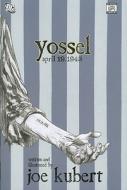
Celtic musical instruments
- Editore:
Books LLC, Reference Series
- EAN:
9781156974476
- ISBN:
115697447X
- Pagine:
- 52
- Formato:
- Paperback
- Lingua:
- Inglese
Descrizione Celtic musical instruments
Source: Wikipedia. Pages: 51. Chapters: Guitar, Fiddle, Harp, Tin whistle, Banjo, Accordion, Hammered dulcimer, Bodhrán, Crwth, Irish bouzouki, Cittern, Bombard, Low whistle, Triple harp, Pibgorn, Diatonic button accordion, Irish flute, Carnyx, Irish fiddle playing, Veuze. Excerpt: The guitar is a plucked string instrument, usually played with fingers or a pick. The guitar consists of a body with a rigid neck to which the strings, generally six in number, are attached. Guitars are traditionally constructed of various woods and strung with animal gut or, more recently, with either nylon or steel strings. Some modern guitars are made of polycarbonate materials. Guitars are made and repaired by luthiers. There are two primary families of guitars: acoustic and electric. Acoustic guitars (and similar instruments) with hollow bodies have been in use for over a thousand years. There are three main types of modern acoustic guitar: the classical guitar (nylon-string guitar), the steel-string acoustic guitar, and the archtop guitar. The tone of an acoustic guitar is produced by the vibration of the strings, which is amplified by the body of the guitar, which acts as a resonating chamber. The classical guitar is often played as a solo instrument using a comprehensive fingerpicking technique. Electric guitars, introduced in the 1930s, rely on an amplifier that can electronically manipulate tone. Early amplified guitars employed a hollow body, but a solid body was found more suitable. Electric guitars have had a continuing profound influence on popular culture. Guitars are recognized as a primary instrument in genres such as blues, bluegrass, country, flamenco, jazz, jota, mariachi, metal, reggae, rock, soul, and many forms of pop. Illustration from a Carolingian Psalter from the 9th century, showing a guitar-like plucked instrument.Before the development of the electric guitar and the use of synthetic materials, a guitar was defined as being an instrument having "a long, fretted neck, flat wooden soundboard, ribs, and a flat back, most often with incurved sides". The term is used to refer to a number of related instruments that were developed and used across Europe beginning in the 12th century and, later, in the Americas. These instruments are descended












